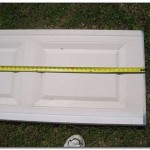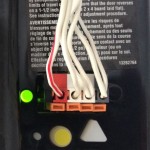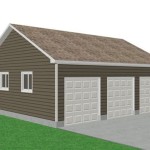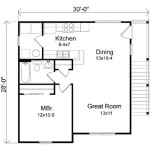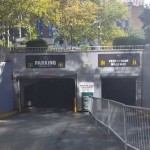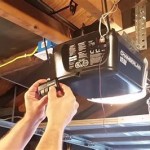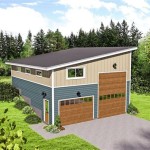Troubleshooting a Malfunctioning Car Garage Opener
A car garage opener that fails to function can be a significant inconvenience, disrupting routines and potentially compromising security. Understanding the common causes and the troubleshooting steps involved in diagnosing and resolving the issue is crucial for efficient restoration of functionality. This article provides a comprehensive guide to identifying potential problems and implementing effective solutions.
Identifying Common Causes of Garage Door Opener Failure
Several factors can contribute to a car garage opener's inability to operate. A systematic approach to identifying these potential causes is essential for effective troubleshooting. Each potential cause has specific symptoms and requires targeted investigation.
Power Supply Issues: The most basic, yet often overlooked, reason for a garage door opener to malfunction is a lack of power. This can stem from a tripped circuit breaker, a disconnected power cord, or a failure within the outlet itself. Confirming a proper power supply is the fundamental first step in diagnosing any garage door opener problem.
Remote Control Malfunctions: The remote control is a frequent point of failure. Issues can range from dead batteries to signal interference or a need for reprogramming. Attempting to operate the door with the wall-mounted control panel helps determine whether the remote is the source of the problem.
Sensor Misalignment or Obstruction: Garage door openers are equipped with safety sensors, typically located near the floor on either side of the door opening. These sensors, also known as photoelectric eyes, prevent the door from closing if an obstruction is detected. Misalignment, dirt, or debris blocking the sensor beam can trigger a safety mechanism that prevents the door from closing or opening.
Motor or Gear Problems: The motor driving the garage door opener can experience mechanical failures over time due to wear and tear. Similarly, the gears responsible for translating the motor's rotation into the door's movement can wear down or break. These issues often manifest as unusual noises or a lack of movement despite hearing the motor running.
Limit Switch Adjustments: Limit switches regulate the distance the garage door travels when opening and closing. Incorrectly adjusted limit switches can cause the door to stop prematurely or fail to open or close completely. These switches typically require precise adjustments for optimal performance.
Broken Springs or Cables: While not directly related to the opener's motor or electronics, broken springs or cables can prevent the door from moving, even if the opener is functioning correctly. These components are under significant tension and require professional repair due to the inherent safety risks.
Radio Frequency Interference: Other devices operating on similar radio frequencies can interfere with the signal between the remote and the garage door opener. This interference can prevent the remote from effectively communicating with the opener unit.
Troubleshooting Steps and Diagnostic Procedures
Once potential causes have been identified, a systematic approach to troubleshooting is essential. Each step should be performed methodically to isolate the problem and identify the appropriate solution.
Verifying Power Supply: Begin by checking the circuit breaker that controls the garage door opener. Reset the breaker if it has tripped. Confirm that the power cord is securely plugged into the outlet and that the outlet itself is functioning correctly by testing it with another device. If there is still no power, consult an electrician.
Testing the Remote Control: Replace the batteries in the remote control with fresh ones. If the remote still does not function, try reprogramming it according to the manufacturer's instructions. Consult the owner's manual for detailed programming procedures. If multiple remotes are available, test each one to determine if the issue is specific to a particular remote.
Inspecting and Adjusting Safety Sensors: Examine the safety sensors for any obstructions and clean the lenses with a soft cloth. Ensure that the sensors are properly aligned. The indicator lights on the sensors should be illuminated steadily, indicating a clear signal path. If the lights are blinking or off, adjust the sensor alignment until a solid light is achieved. Experiment with holding an object between the sensors to confirm that this will cause the door to stop. This confirms they are working and aligned.
Listening for Motor Sounds: Listen carefully when activating the garage door opener. If the motor is running but the door is not moving, a problem with the gears or the drive mechanism is likely. A grinding or clicking sound often indicates worn or broken gears. This usually warrants professional inspection and repair.
Evaluating Limit Switch Settings: Inspect the limit switches, typically located on the motor unit. Consult the owner's manual for instructions on adjusting these switches. Make small adjustments and test the door's operation after each adjustment. Ensure that the door opens and closes fully without stopping prematurely or overshooting the desired position.
Checking Springs and Cables: Visually inspect the garage door springs and cables for any signs of damage or breakage. If a spring is broken or a cable is frayed or snapped, do not attempt to repair it yourself. These components are under extreme tension and can cause serious injury if handled improperly. Contact a qualified garage door technician for professional repair.
Addressing Radio Frequency Interference: Identify potential sources of radio frequency interference, such as nearby wireless devices or electronic equipment. Try moving these devices or temporarily disabling them to see if the interference is resolved. If the problem persists, consider using a garage door opener with a different frequency or a rolling code system to minimize interference.
Preventative Maintenance and Long-Term Solutions
Regular preventative maintenance can significantly extend the lifespan of a car garage opener and minimize the likelihood of malfunctions. Implementing a proactive maintenance schedule helps identify and address potential problems before they escalate into major issues.
Regular Lubrication: Lubricate all moving parts of the garage door opener, including the rollers, hinges, springs, and chain or drive belt, at least twice a year. Use a silicone-based lubricant specifically designed for garage doors. Avoid using oil-based lubricants that can attract dirt and debris.
Sensor Cleaning and Alignment: Regularly clean the safety sensors and ensure that they remain properly aligned. Wipe the lenses with a soft cloth to remove any dirt or debris. Check the alignment periodically and make any necessary adjustments to maintain a clear signal path.
Track Inspection and Adjustment: Inspect the garage door tracks for any damage or obstructions. Remove any debris that may be blocking the tracks. Ensure that the tracks are properly aligned and securely fastened to the wall. If the tracks are bent or damaged, contact a professional for repair or replacement.
Spring and Cable Inspection: Visually inspect the garage door springs and cables for any signs of wear or damage. Look for fraying, rust, or deformation. If any issues are detected, contact a qualified garage door technician for professional inspection and repair.
Motor and Gear Maintenance: Periodically inspect the motor and gears for any signs of wear or damage. Listen for unusual noises during operation. If the motor is running hot or emitting a burning odor, contact a professional for inspection and repair.
Remote Control Maintenance: Replace the batteries in the remote control on a regular basis. Store the remote control in a safe and convenient location to prevent damage or loss. Consider using a keyless entry system as a backup in case the remote control malfunctions.
Professional Inspection: Schedule a professional inspection of the garage door opener at least once a year. A qualified technician can identify and address potential problems before they become major issues. Regular professional maintenance can extend the lifespan of the opener and ensure its safe and reliable operation.
By understanding the common causes of garage door opener failure, implementing systematic troubleshooting procedures, and adhering to a regular preventative maintenance schedule, homeowners can effectively address malfunctions and ensure the long-term reliability of their garage door systems. While some repairs can be undertaken by homeowners with basic mechanical skills, complex issues involving springs, cables, or electrical components should always be handled by a qualified professional to ensure safety and proper functionality. This proactive approach ensures a safe, reliable, and convenient garage door operation, minimizing disruptions and maximizing the lifespan of the system.

Troubleshoot Programming A Garage Door Opener To Your Car

Garage Door Remote Control Not Working Program Battery Reset

How To Reset Your Garage Door Opener When Moving Into A Different Home

Easy Fix Garage Door Remote Not Working

Garage Door Won T Open All The Way 10 Reasons Why Youtube

Garage Door Remote Stopped Working Doormatic Doors

6 Reasons Your Garage Door Remote Control Doesn T Work Angi

Common Reasons The Garage Door Won T Go Down Overhead Company

How To Fix A Garage Door That Won T Open

Program Or Erase Garage Door Opener Toyota And Other Vehicles Homelink Youtube

